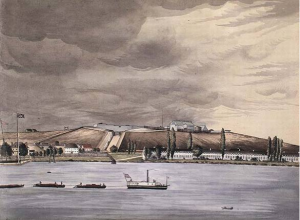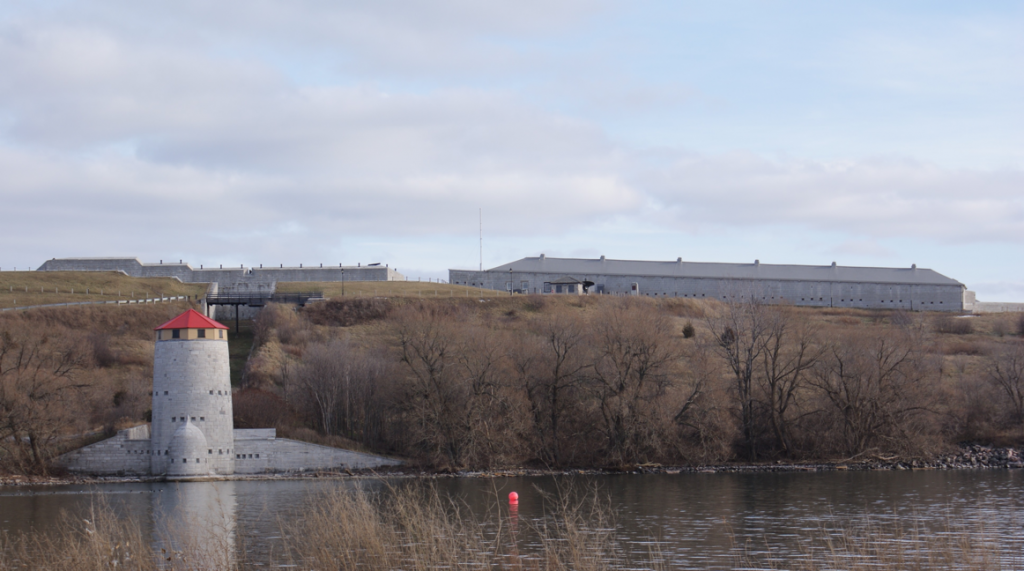Period: 1800-1850
During the War of 1812, a number of troops of soldiers arrived in Kingston to aid in the defense of the country. Though the majority of these were Anglophone troops, one regiment of note was the Voltigeurs, a French Canadian regiment coming from Lower Canada. Four separate companies of Voltigeurs arrived in Kingston in April of 1813, commanded by the lieutenant-colonel Charles Michel de Salaberry (who gained fame at the Battle of Chateauguay just a few months later). These four companies included 12 officers and 250 soldiers, most of whom came from the working classes of Quebec City and Montreal, and were sent from their headquarters in Saint-Philippe, Quebec, to arrive in Kingston April 11th and 12th.
The Voltigeurs were originally posted in the barracks of the new Fort Frontenac, where they stayed for three weeks. They were then stationed in the Kingston highlands for ten days, after having spent the previous ten days on the land of a Mr. Smith. General George Prevost, however, had a different plan for them, and asked them to move to Point Henry, which he believed to be a place of strategic advantage in the War but at the time was completely bare, in May. The Voltigeurs had to sleep in tents among the rocks, the trees, and the wildlife of Point Henry, and were given the task to clean up the area so that a fort could be built there. Over the next couple of weeks, therefore, they leveled the ground, cut down trees, and rid the area of rocks and other obstacles. From here they started building what was to become the first Fort Henry, a structure made mostly out of wood and stones with a small entrenchment surrounding it, which stood until 1832. Its elevated position gave it a vantage point that was much superior to that of Fort Frontenac, and with the battery of 24-pounder long guns it was able to defend the harbour.
Some of the Voltigeurs brought their families along with them to Kingston, though their wives and children did not find much to do in this Anglophone town. One Voltigeur complained that his family did not have enough to eat. The soldiers, however, occupied themselves quite effectively by going to the local taverns, including the Picard tavern, in Picardville, and the Montreal Tavern, on the corner of Wellington and William Streets, both of which drew in mostly francophone crowds. In late July 1814, 3 of the 4 companies of Voltigeurs left Kingston for Niagara, and these taverns lost quite a bit of regular clients because of this. These francophone soldiers contributed to Kingston history quite importantly, nevertheless, by initiating and participating in the construction of one of the city’s iconic historical sites.



